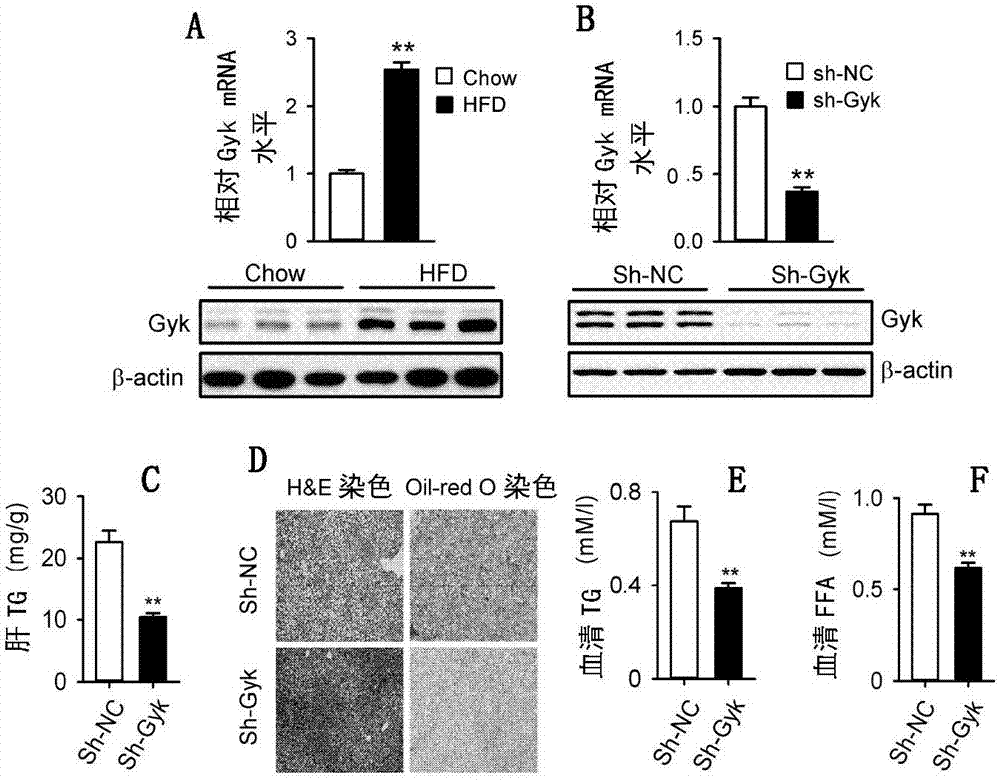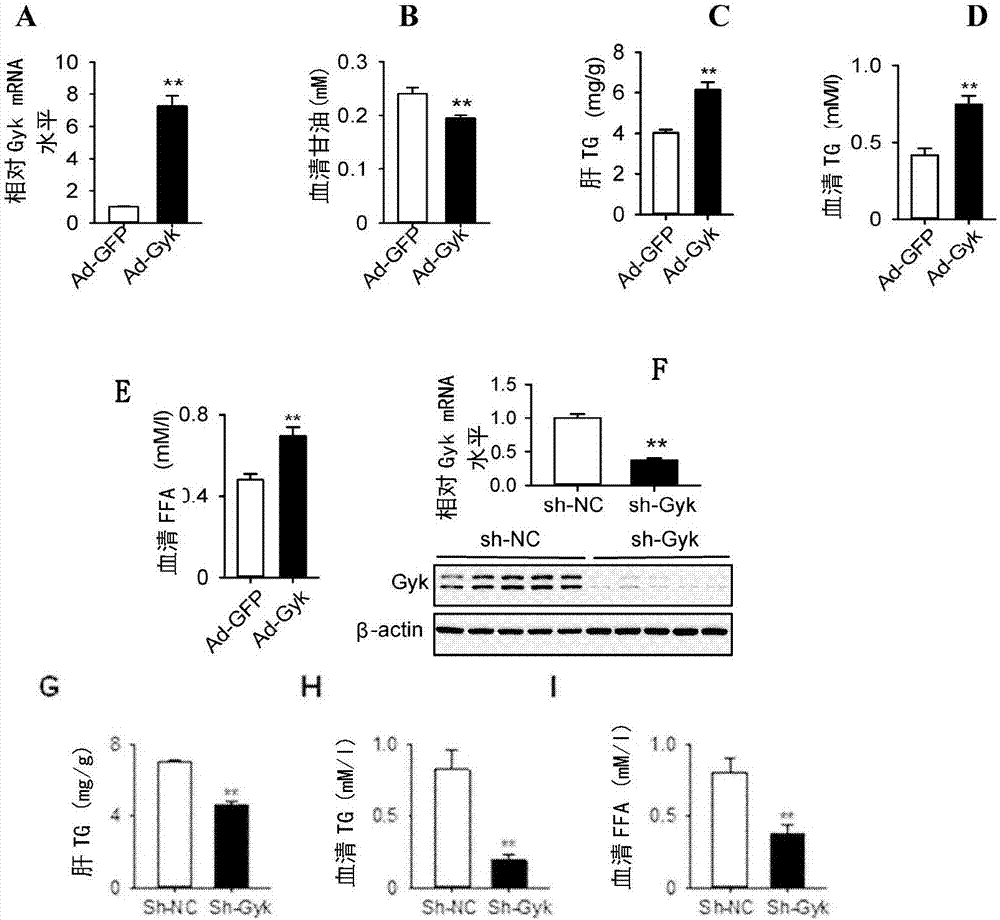Use of glycerol kinase in preparation of drug for regulating lipid metabolism
A technology of glycerol kinase and hypertriglyceridemia, which is applied in the field of medicine and can solve the problem of no glycerol kinase and the like
- Summary
- Abstract
- Description
- Claims
- Application Information
AI Technical Summary
Problems solved by technology
Method used
Image
Examples
Embodiment 1
[0098] Example 1. The expression of glycerol kinase in the liver of mice with lipid metabolism disorder induced by high-fat diet is increased, and inhibiting the expression of glycerol kinase can significantly alleviate fatty liver and improve hyperlipidemia
[0099] Glycerol kinase participates in triglyceride synthesis by catalyzing glycerol to 3-phosphoglycerol, and regulates hepatic fatty acid and triglyceride synthesis by regulating the expression of lipid synthesis-related enzymes mediated by SREBP-1c. Glycerol kinase is mainly expressed in the liver.
[0100] The inventors established mouse fatty liver and hyperlipidemia models through a high-fat diet. It was found that the mRNA and protein levels of glycerol kinase (Gyk) in the liver of C57BL / 6 mice fed with high fat diet (HFD) for 3 months were significantly higher than those of mice fed with conventional diet in the control group ( figure 1 A).
[0101] The present inventor suppresses the liver Gyk expression ( fi...
Embodiment 2
[0103] Example 2. Glycerol kinase regulates liver lipid metabolism and blood lipid homeostasis by regulating glycerol metabolism and SREBP-1c-mediated regulation of lipid metabolism-related enzyme expression
[0104] The inventors explored the function and mechanism of Gyk in liver lipid metabolism and blood lipid homeostasis in normal mice.
[0105] First of all, the inventors observed the effect of overexpressing Gyk on the lipid metabolism of mice by using an adenovirus expression system, and found that Gyk was overexpressed ( figure 2 A) It does not affect the body weight and body fat content of mice, but the serum glycerol level of Gyk overexpressed mice is significantly reduced ( figure 2 B), liver triglyceride (TG) content ( figure 2 C), serum TG level ( figure 2 D) and free fatty acid (FFA) levels ( figure 2 E) are significantly higher than the control mice. These results suggest that Gyk may regulate fatty acid metabolism in addition to regulating liver and b...
Embodiment 3
[0108] Example 3, Gyk regulates the molecular mechanism of liver lipid metabolism
[0109] Further, the inventors explored the molecular mechanism of Gyk regulating liver lipid metabolism, and found that the overexpression of Gyk in normal mice through adenovirus mediated significantly increased the mRNA levels of various enzymes in the hepatic fatty acid synthesis and triglyceride synthesis pathways ( image 3 A), including fatty acid synthase (FASN), ATP-citrate lyase (ACL), acetyl-CoA carboxylase 1 (ACC1), diacylglycerol acyltransferase (DGAT2), and glycerol-3-phosphate acyltransferase Enzyme (GPAT2). In contrast, the mRNA expression of these enzyme genes was significantly decreased in the liver of Gyk knockout mice ( image 3 C). SREBP-1c is a key transcription factor regulating the expression of these liposynthase genes. The inventors found that the mRNA level of SREBP-1c was significantly increased in Gyk overexpression mouse liver ( image 3 B), in the liver of Gyk k...
PUM
 Login to View More
Login to View More Abstract
Description
Claims
Application Information
 Login to View More
Login to View More - R&D
- Intellectual Property
- Life Sciences
- Materials
- Tech Scout
- Unparalleled Data Quality
- Higher Quality Content
- 60% Fewer Hallucinations
Browse by: Latest US Patents, China's latest patents, Technical Efficacy Thesaurus, Application Domain, Technology Topic, Popular Technical Reports.
© 2025 PatSnap. All rights reserved.Legal|Privacy policy|Modern Slavery Act Transparency Statement|Sitemap|About US| Contact US: help@patsnap.com



